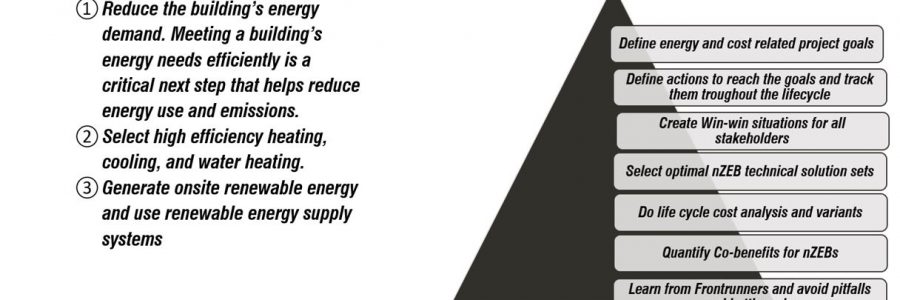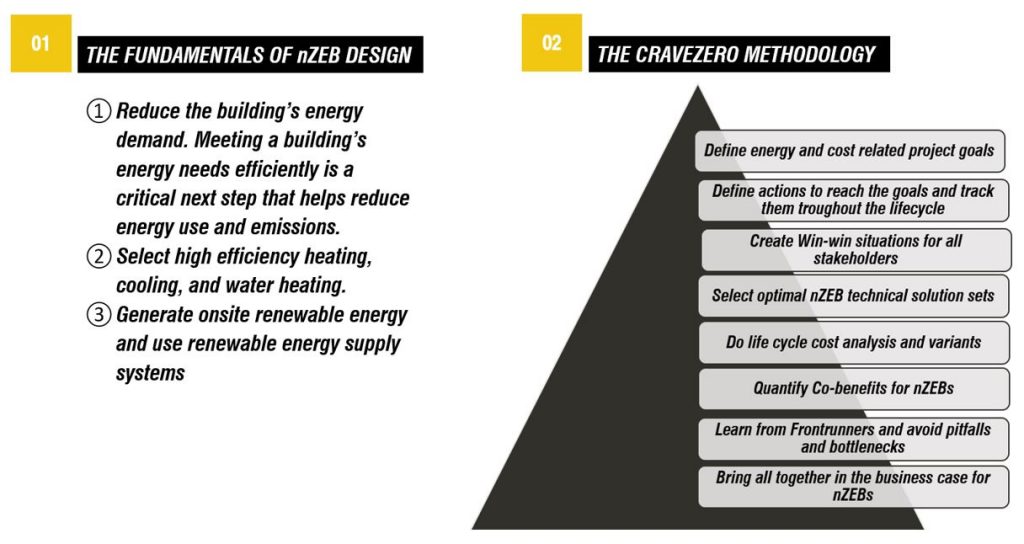
The CRAVEzero Framework
nZEB-design is a multi-objective challenge where stakeholder interests’ often conflict with each other. The aim of the “CRAVEzero framework” is to provide knowledge to more confidence for decisions to reach nZEB goals ant their relation to energy and cost performance.
The main targets pursued in the project can be summarized as follows:
❶ The reduction of construction-related costs compared to the current cost of a new conventional building that meets current building regulations.
❷ The nearly zero (or beyond) energy consumption (including on-site or nearby renewable energy sources) and nearly zero impact of materials used over the whole life cycle.
❸ The co-benefits such as increased real estate value and working environment quality.
❹ The cost-effectiveness of the investment from a business model point of view.

THE FUNDAMENTALS OF nZEB DESIGN
- Reduce the building’s energy demand. Meeting a building’s energy needs efficiently is a critical next step that helps reduce energy use and emissions.
- Select high efficiency heating, cooling, and water heating.
- Generate onsite renewable energy and use renewable energy supply systems.
THE CRAVEZERO FRAMEWORK
- Define energy and related project goals.
- Define actions to reach the goals and track them throughout the life cycle.
- Create win-win situations for all stakeholder.
- Select optimal nZEB technical solution sets.
- Do life cycle cost analysis and variants.
- Quantify co-benefits for nZEBs.
- Learn from frontrunners and avoid pitfalls and bottlenecks.
- Bring all together in the business case for nZEBs.

